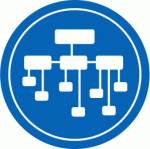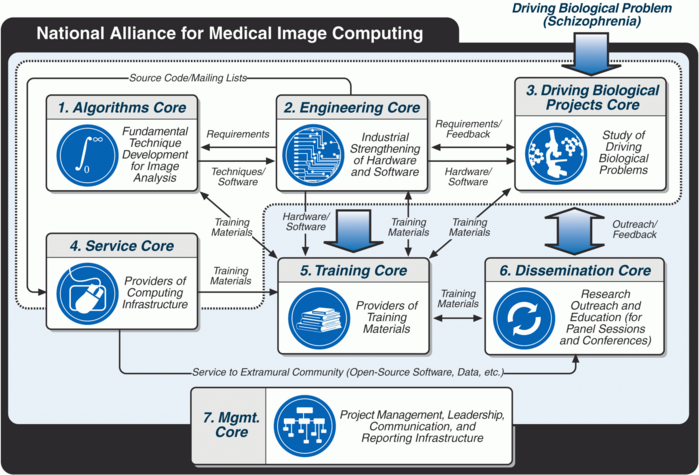Management
Management
The specific aim of Core 7 is to provide a flexible yet effective administrative structure for managing the many collaborative activities of the 3 technology and 4 service cores of NA-MIC. To accomplish this aim, Core 7 will develop and execute a management plan based on a balanced management strategy that accommodates shared decision-making and mutual responsibility among the core PIs, while providing oversight and leadership in support of quality biomedical computing and investigation. The management structure of NA-MIC can be defined as the implementation of a balanced management strategy in the context of a “distributed” center with distributed decision-making and distributed responsibilities among the participating cores. The management structure defines a clear role for each core and key investigator and consists of a Project Management Office, an External Advisory Committee, a Governance Committee, and several Special Topic Task Forces to address special issues. The Core 7 Research Plan provides an organizational chart of NA-MIC, including the names of the investigators (i.e., Chairs and PIs) responsible for each unit.
Consistent with the concept of a distributed center, the individual cores of NA-MIC have the autonomy and knowledge to plan and manage their own resources and activities. The role of the NA-MIC Project Management Office is to provide overall project planning, integrated project tracking, and oversight for quality assurance of deliverables from individual cores. The External Advisory Committee (EAC) consists of external representatives from the NIH funding agency, scientific and clinical user community, and biomedical imaging and computational scientists nationwide. This committee will meet on an annual basis to review progress and offer constructive advice to the PIs and investigators of the Center. The Governance Committee is responsible for establishing and executing NA-MIC policies, setting scientific priorities, resolving potential resource conflicts, reviewing and approving research and collaborative projects of NA-MIC, and has final responsibility for all fiscal matters. Each Task Force is charged with the duty of developing detailed NA-MIC Governance Policies and Operational Guidelines of a subject-specific nature, e.g., intellectual property, governance, data-sharing, and training. Task forces will be created and disbanded by the Governance Committee and exist for specified periods of time.
Having the right organizational structure in place is only the first step to ensuring the team environment that will permit NA-MIC to achieve its goals. The distributed nature of this center requires close interaction between the various research and support cores. The essence of teamwork is a common commitment to a common set of goals. To achieve this goal, we have defined the second step of the NA-MIC management approach to work-product development, which can be viewed in terms of the spiral model and iterative process that cultivates and reinforces the interaction and collaboration of various teams under the NA-MIC management structure. Core 7 also presents a strategy for the recruitment of new collaborations and DBPs in Year 4 of the project. Finally, the management plan includes a summary of the major milestones and activities this alliance hopes to accomplish.
The following illustration demonstrates how the NA-MIC Cores interact (click image for larger view):

